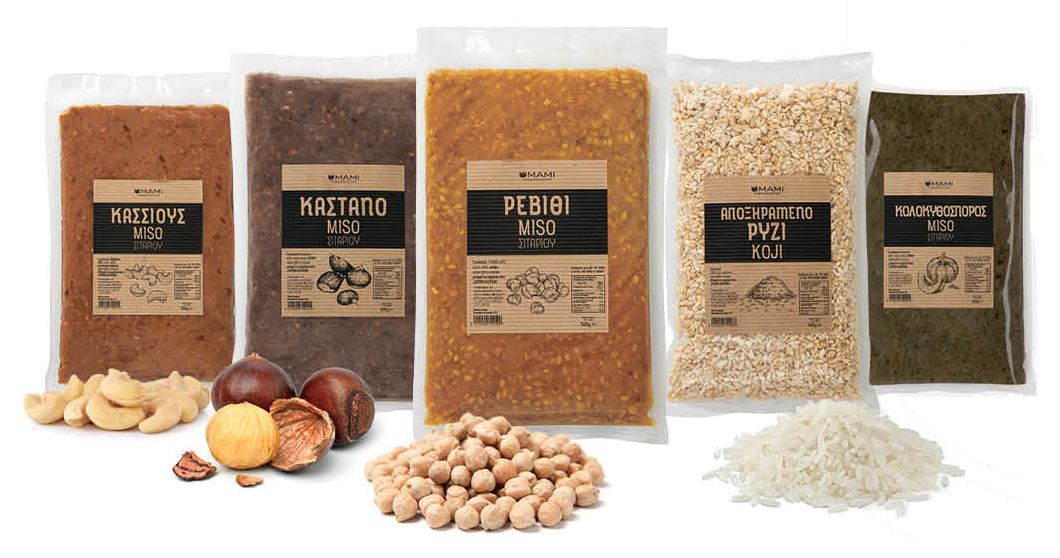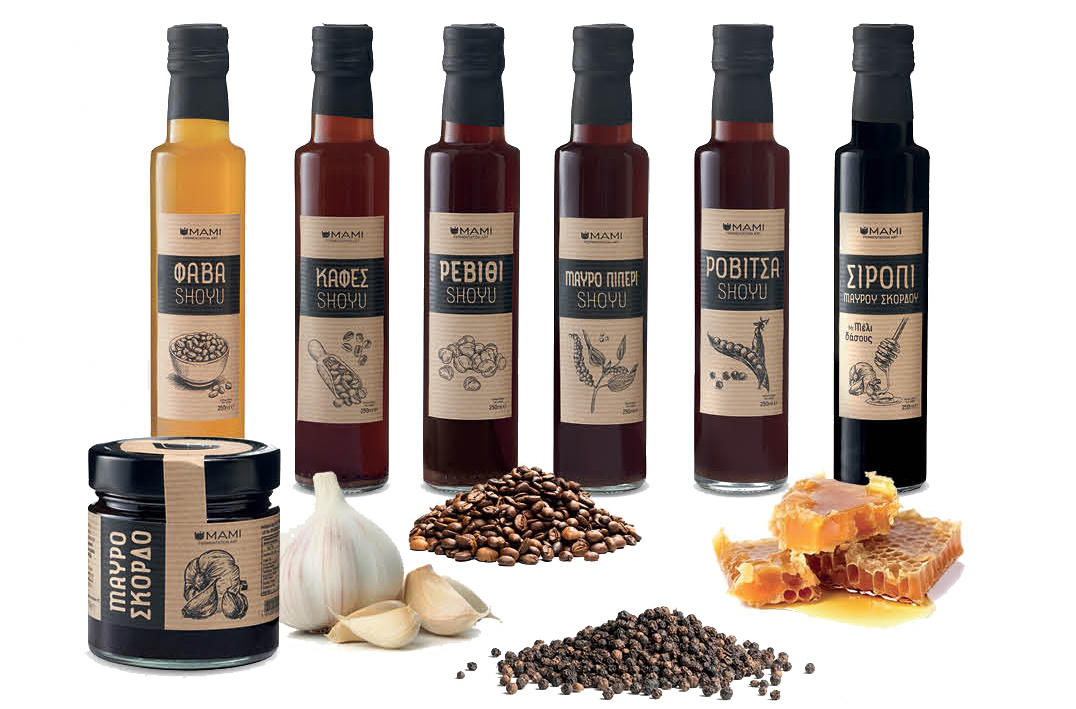What is miso?
In recent years we have increasingly found miso participating in various dishes.
The history of this paste begins about 2500 years ago. Then the Chinese began to prepare their own paste from fermented soybeans, the so-called "jiang". No one can say whether it was discovered by chance or not. The only thing certain is that legumes, due to their high protein content, can easily be fermented and a large amount of amino acids can be released. When these amino acids are combined with enough salt, the product created is rich in umami.
The Buddhist religion is implicated in the propagation and spread of hatred in Japan. As it favors the vegetarian diet - which the Japanese elite had already adopted since the Nara period (710 - 794) - when it was introduced by Chinese Buddhist priests around the end of the 7th century, it was immediately accepted as compatible with the Japanese diet. Initially miso was produced in temples only by Buddhist priests and of course it was a luxury enjoyed exclusively by monks and nobles since it was made from rice, which at that time was still food for the few. However, as the belief that miso was a food of high energy value spread, the samurai also chose it as a basic element of their diet. By the 8th century it seems to have held an important place and even came to form part of the salary of state officials - along with rice, salt, soybeans and other pulses and grains. What kind of hate each person ate was an indication of what class they came from - always, after all, food was a marker of class distinctions. Wealthy landowners, kings, and samurai ate only miso rice, which was made from expensive, polished, white rice. It was often so expensive that it was even offered as a gift or barter. In fact, farmers and farm workers were forbidden to use the rice they harvested to make their own rice. That is why even the economically weaker classes made their hate from broken rice or from other cereals, such as millet and barley. This explains why the darkest hatred, made from these materials, is called, even today, "poor man's hatred". From the Muromachi period, after 1336, hatred was "democratized", used by all, without discrimination. And so it came to be a staple of Japanese cuisine. In fact, according to a Japanese expression - similar to what we used to say "she must know how to boil at least one egg" - once upon a time a Japanese woman had to know how to prepare miso soup in order to... get married.
The preservation of foods and beverages resulting from fermentation has for millennia been an effective form of extending the shelf life of foods. Traditionally, foods were preserved thanks to naturally occurring fermentations however, modern large-scale production is investigating the use of defined starters to ensure consistency and quality in the final product. Fermenting grains and legumes, mainly soybeans, with salt mixtures during the warmer months was a common way of preserving food. This practice formed the backbone for making miso. Jiang, the Chinese soy paste, renamed "miso" by the Japanese was also used to produce shoyu (Japanese soy sauce), another of the most characteristic ingredients of Japanese cuisine.

What is shoyu?
In the 7th century, Buddhist monks brought soy sauce to Japan.
They introduced vegetarianism to the country, bringing with them many soy-based products, such as soy sauce. The Japanese modified the classic until then soy sauce, creating a soy sauce that became known as shoyu and was characterized by modifications in its composition. Shoyu quickly became the main seasoning of Japanese cuisine, replacing guosho, a sauce made from fish.

Umami Blog
In this section you will find useful news, tips and recipes!
A few words about Miso
Miso, a pasty substance made from fermented soybeans, wheat or rice, is deeply rooted in Japanese cuisine and culture. Although today we mostly know it as a key ingredient in miso soup, its origins and use date back centuries. The original forms of miso come from China, where similar pasty substances are made from fermented grains and soybeans. Hatred arrived in Japan in the 7th century AD. through Buddhist monks and there it found a way to evolve and adapt to local tastes.
Recipe: Miso soup
Miso soup is much more than just a hot drink: it is a culinary experience that embodies the philosophy of Japanese cuisine. The combination of the deep and rich flavor of miso with the softness of tofu and the lightness of fresh onions creates a soup that is both nourishing and healing. Whether you're a fan of Japanese cuisine or just looking for a way to add miso to your diet, this recipe will transport you to the heart of Japan with every sip.